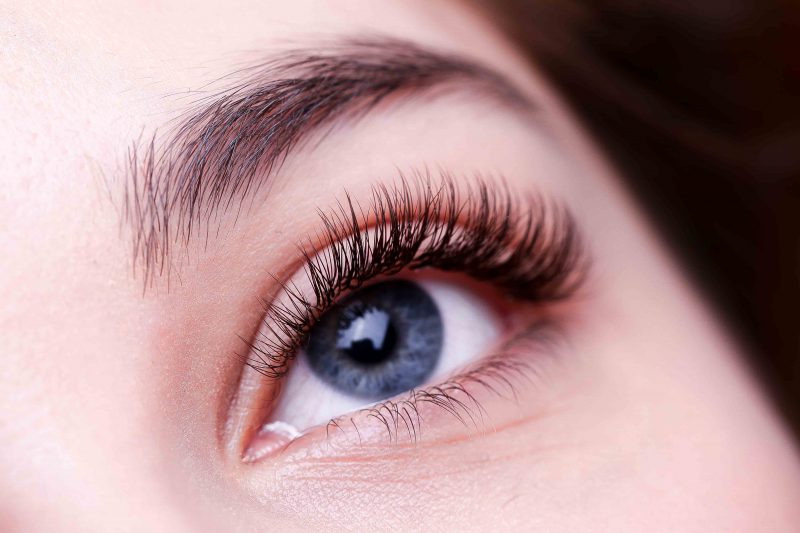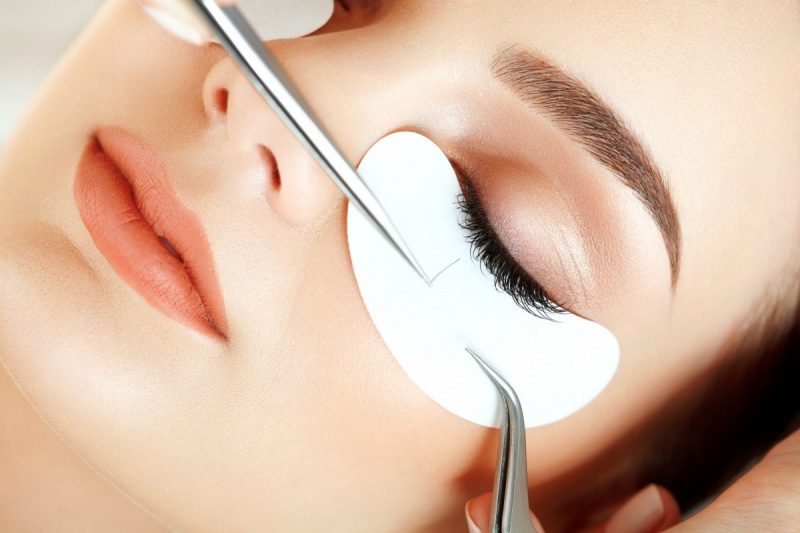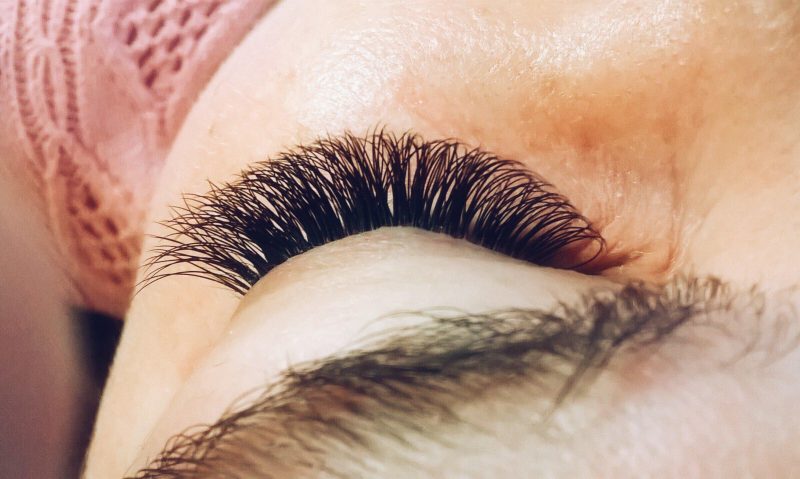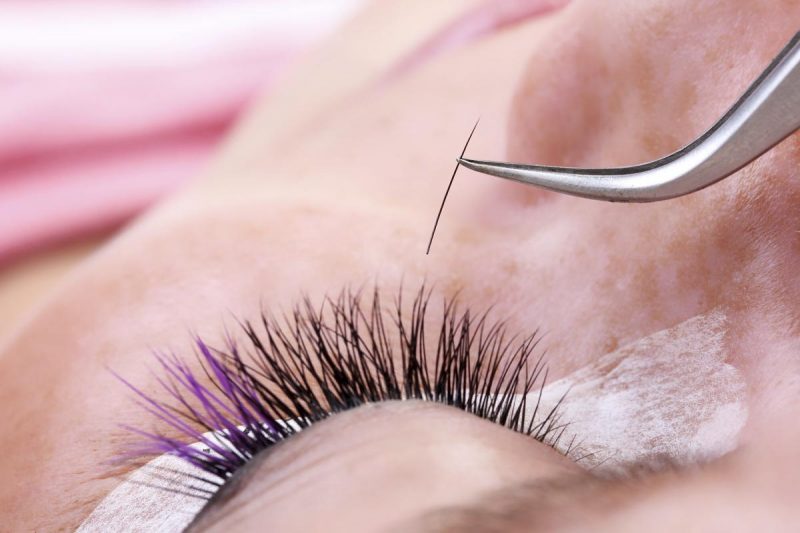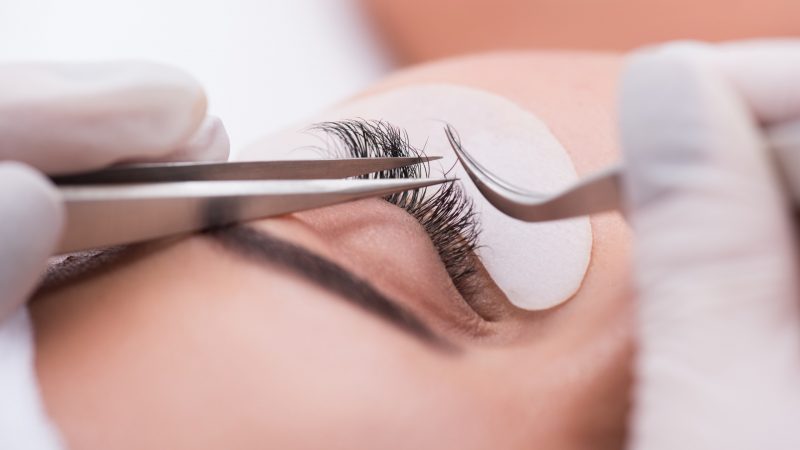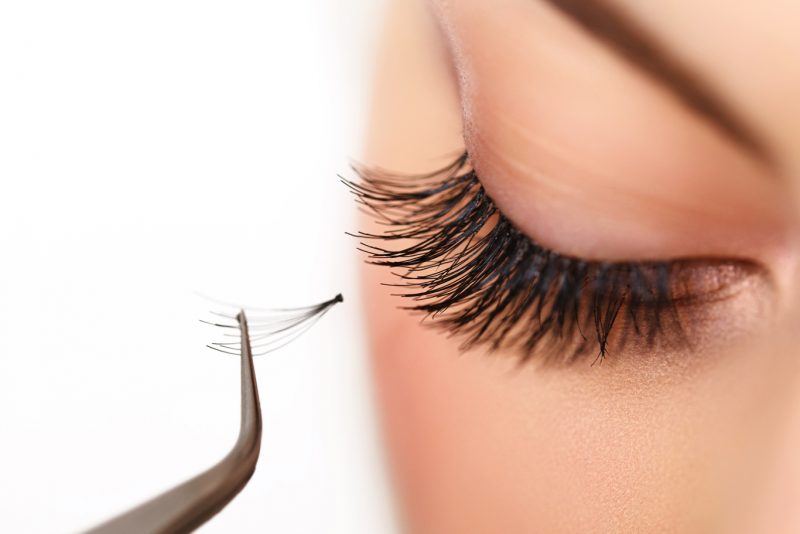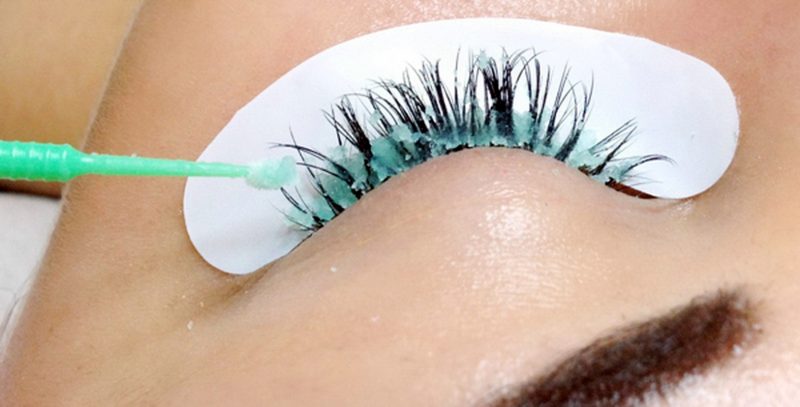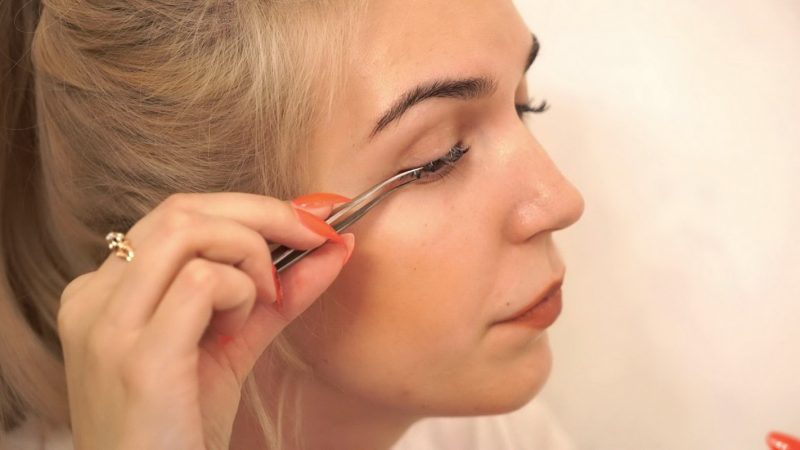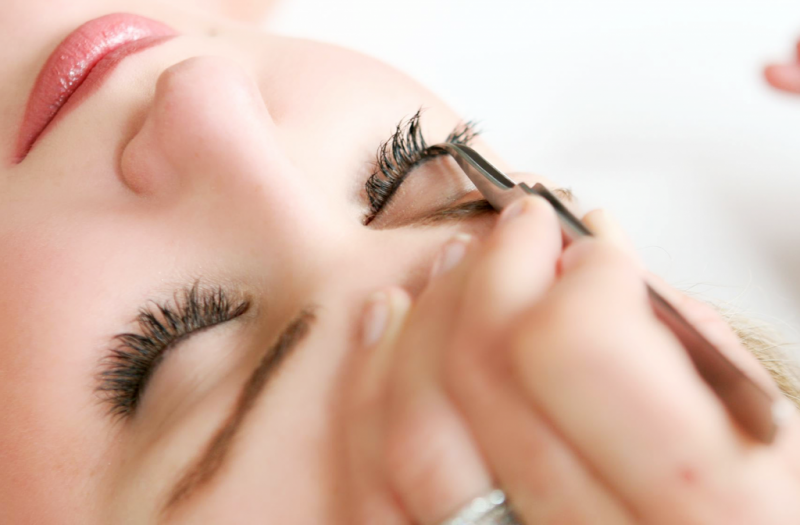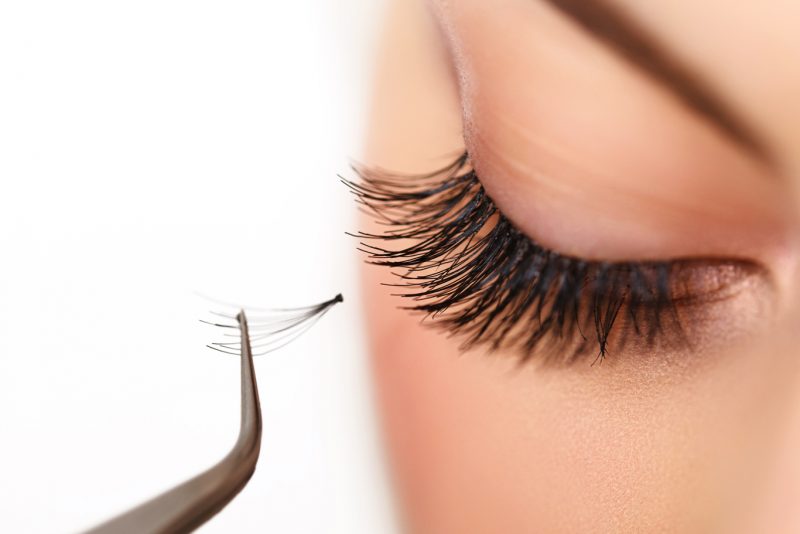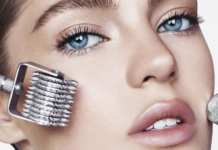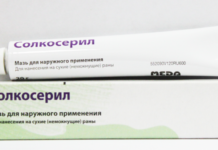Long thick eyelashes, giving the look playfulness and expressiveness, are undoubtedly a source of pride for their owners. And if earlier not everyone had the opportunity to boast such wealth, now a variety of techniques allows any girl to simulate the desired length of the ciliary row. Eyelash extension in the salon is not a cheap pleasure, therefore, we suggest that you perform the procedure yourself, following the instructions in this article.
Material Content:
How to make classic eyelash extensions at home
In classical technology, for every natural eyelash there is one artificial hair. At the same time, eyelashes of different lengths and diameters are used in the extension process, so that the final result is as natural as possible.
The classic extension method is the most popular of all existing methods, as it allows you to recreate the natural growth line of your eyelashes. As a result, the artificial material does not look foreign or vulgar, and the resulting natural curvature of the eyelashes makes the look more vivid and expressive.
Necessary tools and materials
In order for the home procedure to succeed, you should prepare all the necessary tools in advance. The difficulty lies in the fact that in the process of building it is necessary to be extremely careful in order to avoid getting used chemical materials on the mucous membrane of the eye.Otherwise, edema, inflammation of the eye and very strong painful sensations are provided.
The novice master will need the following materials for building:
- special adhesive based on hypoallergenic components;
- a pair of toothpicks;
- a bag of cotton sponges;
- small tweezers;
- glass or plastic dishes for glue;
- aerosol for degreasing cilia.
Training
Before proceeding to the technique of building, it is mandatory to:
- wash your hands thoroughly with soap and cleanse your face from makeup;
- fix the lower ciliary row so that it does not interfere with the building process. In this case, additional linings that are used to hide the lower eyelashes will come in handy. Typically, such applicators are made on the basis of silicone or collagen.
Note: if for some reason you did not purchase special linings, they can be replaced by ordinary paper tape.
Be especially careful when gluing your eyelashes. It is very important that the eye is completely closed throughout the procedure, otherwise the evaporating substances will provoke severe irritation of the ocular mucosa.
At the final stage, the eyelashes are processed using a special degreasing composition. In a small amount of aerosol, a cotton pad is moistened, after which the entire upper ciliary row is carefully processed. Preliminary preparation is completed. Next, you should study the step-by-step instructions for building up in order to be able to repeat the process yourself.
Step-by-step instruction for beginners
Important! If you first decided on an independent procedure, we recommend that you first use the help of a girlfriend or another person, so that in the initial stages it will be easier for you to master the classic building technique.
As mentioned above, this method involves the ciliary attachment of artificial hairs. In total for a home procedure you will need about 80 - 100 cilia.
- A small amount of glue is poured into the prepared container.
- Next, the artificial hair is captured with tweezers, after which half of the eyelashes are moistened in an adhesive composition. Note that the hair is processed from the blunt edge.
- In the next step, the treated hair is attached to a natural eyelash, retreating from its base approximately 1 mm.
- To make the effect as natural as possible, short cilia are used for the inner part of the eye, and then, as they move toward the outer corner, longer hairs are taken. Thanks to this technique, the result is an expressive "cat" look.
- Experts in the field of building recommend an alternate technique, when first they process about 20 to 30 cilia in one eye, then the same number of hairs is glued to the other eye.
- At the final stage, it is necessary to close all voids with cilia, after which the final result is evaluated and, if necessary, the number of hairs in each eye is adjusted.
Extension of individual cilia
First of all, beginners are interested in the main question: is eyelash extension harmful? We hasten to dispel your fears and warn that properly executed equipment in compliance with all the rules will not do any harm to your eyelashes.
In the process of gluing one artificial cilia on one natural one, some subtleties should be adhered to:
- Artificial hairs are fixed at a distance of no more than 0.5 - 1 mm from the start of growth of a natural eyelash.
- In the process of processing, it is very important not to adhere the cilia to each other. Otherwise, you will experience discomfort during the entire period of wearing artificial hairs.
- For a more accurate and aesthetic result, it is recommended to fix the cilia in the same direction.
Thanks to a combination of cilia of different lengths and diameters, you will be able to create different effects from each other:
- Natural - the natural growth of the ciliary row is preserved, but the gaze acquires great expressiveness without the use of mascara.
- The effect of “cat's eye” - at the outer corner, the hairs are longer than in the inner part of the eye.
- “Fox” effect - the cut of the eyes visually becomes more slanted due to the maximum lengthening of the eyelashes of the outer corner.
- Puppet - both external and internal short cilia are lengthened to get the effect of wide eyes.
Japanese technology
- At the initial stage, all the hairs are poured onto the paper, after which a material of suitable length and diameter is selected.
- Then degrease the tweezers, the upper ciliary row and gently comb the eyelashes.
- The bottom row is masked with special silicone pads.
- The tip of the hair greased in the glue is fixed near the base of the natural eyelash. So that the rest of the hairs do not interfere with the building process, they are carefully moved away with a toothpick.
- For better fixation, the edge of the artificial eyelash is well pressed to the natural hair.
- After processing, it is recommended that you do not open your eyes for a while to allow the adhesive to grip as best as possible.
Bundles
This technique allows you to create a very magnificent festive effect of building, as a bundle consisting of several hairs is glued onto one natural eyelash.
Nodular and non-nodular bundle types are distinguished.
- The former are much easier to fix, however, as a result of the gluing joint, the ciliary row is artificial.
- Bezelless beginners are much more difficult to stick, but they look as natural and neat as possible.
The main feature of this extension is that bundles of several hairs adhere to the eyelid itself. For this, natural eyelashes are gently pushed apart with tweezers, after which the beam processed in the glue is fixed.
2D, 3D eyelash extensions
The double volume, or 2d effect, is achieved by gluing two artificial cilia on one natural cilia. In this case, the hairs should be directed in different directions. Thanks to this technique, the effect of very magnificent, voluminous eyelashes is created, which give the look a piquant flirty. However, to perform such a technique at home without prior dexterity is quite difficult.
Extension in the 3d technique involves fixing just three hairs on one natural cilia. To achieve a natural appearance, hairs of various lengths are used.
Removing eyelash extensions at home
Between the procedures it is recommended to take a break of several months, since it is not possible to restore the eyelashes after the extension immediately. Especially if various mistakes were made in the process of home appliances. It is very important to study not only the technique of extension, but also be able to properly remove artificial hairs so as not to harm natural eyelashes.
We recommend using the following step-by-step instructions:
- Make a steam bath for steaming your face.
- Next, moisten a cotton swab in castor oil and gently draw it along the entire ciliary row. Do this as carefully as possible to prevent contact with eyes.
- As soon as all the eyelashes are thoroughly treated with oil, try to slowly remove the extended material without jerking.
- Finally, clean the eyelids of oil residues by rinsing with plenty of warm water.
Instead of castor oil, the use of burdock and sunflower is allowed.
Pros and cons of the procedure
Each of us dreams of a beautiful expressive look, but the question of which is better, lamination or eyelash extensions, is still open.
Only the fact is proved that the constant bonding of artificial material without the necessary break does not affect the condition of natural cilia in the best way. They become brittle, lifeless and very much weakened by the influence of auxiliary hairs. This is perhaps one of the main disadvantages of this technology.
On a note! Extension is contraindicated for people suffering from inflammation of the ocular mucosa, in particular, in the presence of a disease such as conjunctivitis.
The pluses include the following:
- there is no need for permanent mascara tinting;
- a great opportunity to adjust the shape of the eyes or mask the overhanging eyelid;
- eliminates the risk of smearing makeup in the sauna, pool or on the beach.
Eyelash Care After Extensions
As soon as you become a happy owner of long cilia, you should immediately take care of proper care, so that the resulting effect retains its neatness and beauty as long as possible.
- It is forbidden to wet artificial hairs immediately after the procedure. You can wash your face only after 4 - 5 hours after completion of building.
- Do not subject artificial eyelashes to mechanical impact, whether it is rubbing the eyes with your hands or checking the adhesion.
- Fans who fall asleep on their stomach will now have to avoid this position in a dream, since when a person touches a pillow, artificial hairs can break.
- It is also worth abandoning the use of decorative and care cosmetics for the eye area, which contains fatty nourishing oils.
- Every 2 - 3 weeks it is necessary to carry out a special correction so as not to harm the health of your own natural eyelashes.
Common mistakes
A beginner at the training stage cannot avoid mistakes that may not have the best effect on the health of eyelashes and distort the desired effect. However, most novice masters make the same mistakes, therefore it is better to learn about them in advance in order to try to avoid in their own practice.
- Artificial material is attached, starting from the middle of natural hairs, thereby causing serious harm to their own eyelashes. Such improper technique significantly reduces the period of operation of extended cilia.
- During the procedure, a certain build-up scheme is not observed, as a result of which the effect obtained does not meet the stated expectations.
- A special silicone pad is not correctly installed, with which the lower ciliary row is masked. Because of this, the eyelids do not close completely, and the volatile fumes of the adhesive penetrate into the eye, causing serious burns to the mucous membrane.
Follow the indicated rules, avoid common mistakes and take care of your eyelashes!


